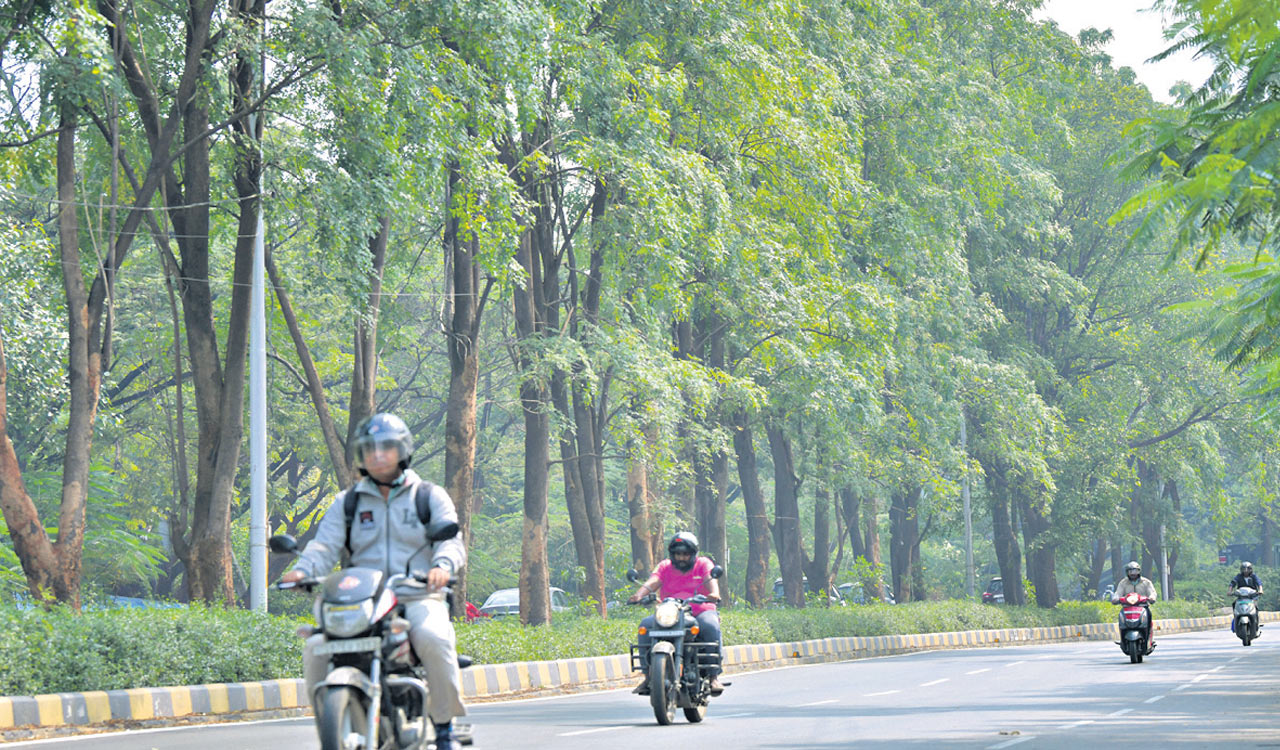Hyderabad’s most polluted areas see notable difference in November
Published Date – 10:48 PM, Wed – 20 December 23

Hyderabad: Hyderabad experienced a boon this November as heavens opened up with showers that are typically rare for this time of the year.
While the city’s more pollution-affected localities usually grapple with elevated pollution levels during the winter months, this year’s November witnessed a stark departure from the norm, offering a breath of fresh air to its inhabitants.
Based on Telangana State Development Planning Society’s comprehensive report with monthly air quality index values, a comparative analysis between November 2022 and November 2023, reveals the notable transformation in the air quality of Hyderabad’s most polluted zones.
Last year, concerns over pollution loomed large, plaguing locales like Nehru Zoological Park, Pashamylaram, and ICRISAT with alarmingly high Air Quality Index (AQI) values surpassing 200, indicating a distressing state of the air quality.

However, contrasting sharply with the preceding year, this November saw a remarkable shift in AQI readings across these monitoring stations in Hyderabad. Areas such as Nehru Zoological Park, Pashamylaram, and ICRISAT exhibited substantial decreases in AQI values, transitioning from severe pollution categories to notably improved air quality conditions.
Senior social scientist WG Prasanna Kumar underscored the significance of this meteorological anomaly, stating, “Traditionally, winter months witness peak air pollution. Yet, this November, Hyderabad experienced notably improved air quality, courtesy of the unexpected winter showers”. He added, “Whenever winter rains occur, pollution levels tend to plummet.”
The overall trend for November this year showcased a conspicuous enhancement in air quality at monitoring stations within the city’s previously polluted areas.
However, certain localities such as ECIL, Malakpet, Kompally, Nacharam, and Khairatbad observed a sharp increase in AQI levels in contrast to the corresponding period from the previous year.
As the city progresses towards the upcoming months, the trajectory of air pollution levels remains contingent upon the meteorological conditions, particularly the severity of the impending winter.
While the recent rains have contributed to better air quality, the extent of this improvement hinges on the forthcoming weather patterns. Prasanna Kumar highlighted this dependence, noting that a colder winter might potentially elevate pollution levels once again.


